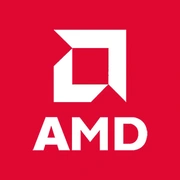AMD A6-3500

AMD A6-3500: Architecture, Compatibility, and Use Cases in 2025
Overview of an outdated but relevant budget processor
1. Key Specifications: Architecture, Process Technology, Performance
Llano Architecture and 32 nm Process
The AMD A6-3500 processor, released in 2011, belongs to the Llano line and is based on the K10.5 architecture. This hybrid solution combines three CPU cores (with a clock speed of 2.1–2.4 GHz) and integrated Radeon HD 6530D graphics. The process technology is 32 nm, which, by modern standards (2025), seems archaic: today, 5–7 nm chips dominate the market.
Performance
According to Geekbench 6 tests:
- Single-core performance: 284 points (for comparison, the Ryzen 3 7300X scores over 1800 points);
- Multi-core performance: 669 points.
These metrics place the A6-3500 in the category of office and media tasks. For example, it can handle a browser (5–10 tabs), office applications, and 1080p video, but it will struggle with rendering or modern games.
Key Features
- Integrated Radeon HD 6530D graphics (320 stream processors) — allows running old games like CS:GO or Dota 2 at low settings (30–40 FPS at 720p);
- Low power consumption (TDP 65 W) — suitable for compact PCs;
- Turbo Core technology — automatic overclocking to 2.4 GHz under load.
2. Compatible Motherboards: Sockets and Chipsets
FM1 Socket
The A6-3500 uses the FM1 socket, which is not compatible with newer FM2/FM2+/AM4/AM5 sockets. In 2025, new boards for FM1 are not being produced, but you can find models on the secondary market (e.g., eBay):
- ASUS F1A75-M (A75 chipset) — used price: $20–30;
- Gigabyte GA-A55M-DS2 (A55 chipset) — used price: $15–25.
Selection Features
- A75/A55 chipsets — support USB 3.0 (only A75), SATA III (6 Gbps);
- PCIe 2.0 limitation — modern graphics cards (e.g., RTX 4060) will work but with performance loss due to the narrow bus.
3. Supported Memory Types
The A6-3500 works only with DDR3 (up to 1866 MHz). Memory capacity — up to 64 GB (theoretically), but in practice, most FM1 boards support 16–32 GB.
Issues in 2025:
- DDR3 is outdated — new modules are hardly being manufactured;
- DDR3 prices: 8 GB — $25–30 (new, if you find them), 16 GB — $50–60.
Recommendation: Use dual-channel mode (2x4 GB or 2x8 GB) to enhance the performance of the integrated graphics.
4. Power Supply Recommendations
The processor itself consumes up to 65 W, but when building a system, consider:
- Integrated graphics — does not require additional power;
- Discrete graphics card (e.g., GTX 1650) — adds 75–100 W;
- Hard drives, SSDs, fans — 30–50 W.
Minimum PSU:
- For PCs without discrete graphics: 300–350 W (e.g., be quiet! System Power 10 — $40);
- With a graphics card: 450–500 W (EVGA 500 BR — $50).
Tip: Don’t skimp on the PSU! Cheap models (under $30) can damage components.
5. Pros and Cons of the AMD A6-3500
Pros:
- Ultra-budget price: New processors are not available, but used ones can be bought for $10–15;
- Integrated graphics — does not require purchasing a separate graphics card;
- Low power consumption — suitable for HTPC (home theater PCs).
Cons:
- Weak performance — will not support Windows 11 (officially unsupported);
- Outdated platform — lacks PCIe 4.0, USB-C, NVMe;
- Limited upgrade options — maximum for FM1: A8-3850 or Athlon II X4 651 processors.
6. Use Cases
Office Tasks
- Working with documents, email, Zoom/Teams (without background effects).
Multimedia
- Watching 1080p video (YouTube, Netflix), music, light editing in Shotcut.
Gaming
- Older titles: Half-Life 2, GTA: San Andreas, World of Tanks (720p, low settings).
Real-world example: A user built an HTPC with A6-3500 + 8 GB DDR3 + 240 GB SSD. The system functions as a media center running Linux (Kodi) and consumes 40 W.
7. Comparison with Competitors
Intel Pentium G620 (2011):
- 2 cores, 3.1 GHz, HD Graphics — poorer in multi-threaded tasks but better in single-threaded.
AMD Athlon II X4 640:
- 4 cores without integrated graphics — a good choice for upgrading old PCs with discrete graphics cards.
Conclusion: The A6-3500 only wins out when integrated graphics are necessary.
8. Practical Assembly Tips
1. SSD is a must! Even a SATA SSD (e.g., Kingston A400 — $25) will speed up the system.
2. Cooling: The stock cooler is sufficient, but replace the thermal paste (Arctic MX-4 — $5).
3. Operating System: Consider using Linux (Lubuntu) or Windows 10 LTSC.
4. Don’t overpay for memory — DDR3 is more expensive than DDR4, look for used options.
9. Final Conclusion: Who is the A6-3500 For?
This processor is a niche solution for:
- Enthusiasts building retro computers;
- Budget HTPCs (media centers, digital signage);
- Office PCs for basic tasks in countries with limited access to newer technology.
Why in 2025?
- The price for used units is cheaper than a cup of coffee;
- Minimal energy consumption requirements;
- Nostalgic factor and experimentation.
Alternatives for those willing to spend $100–150:
- New processors — Intel Celeron G6900 ($50) + H610 motherboard ($70);
- Used bundles — Ryzen 3 2200G ($60) + A320 ($40).
The AMD A6-3500 is a relic of the past, but in capable hands, it can find a second life. The key is to realistically assess its capabilities and not expect miracles.
Basic
CPU Specifications
Memory Specifications
GPU Specifications
Benchmarks
Compared to Other CPU
Share in social media
Or Link To Us
<a href="https://cputronic.com/index.php/cpu/amd-a6-3500" target="_blank">AMD A6-3500</a>